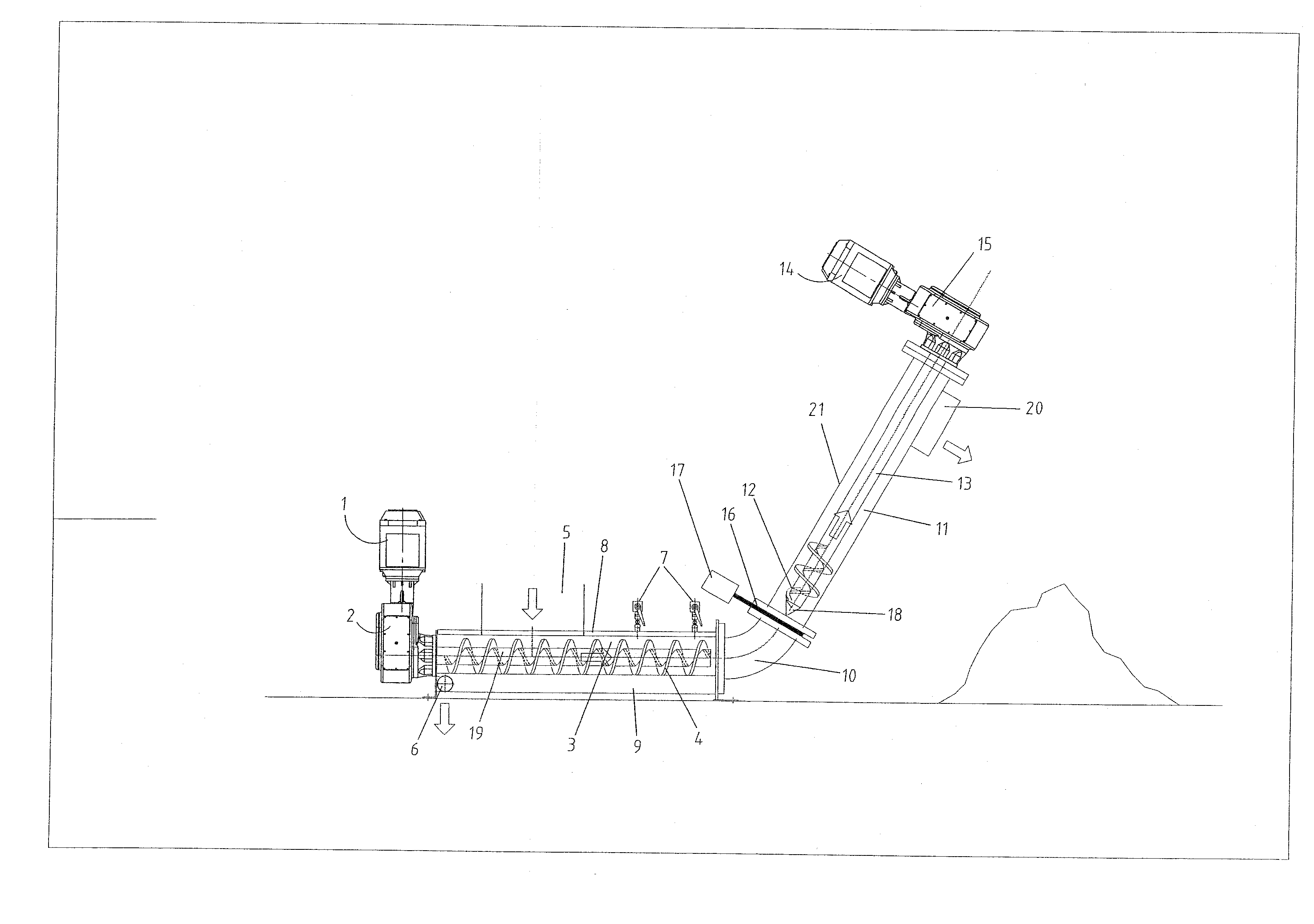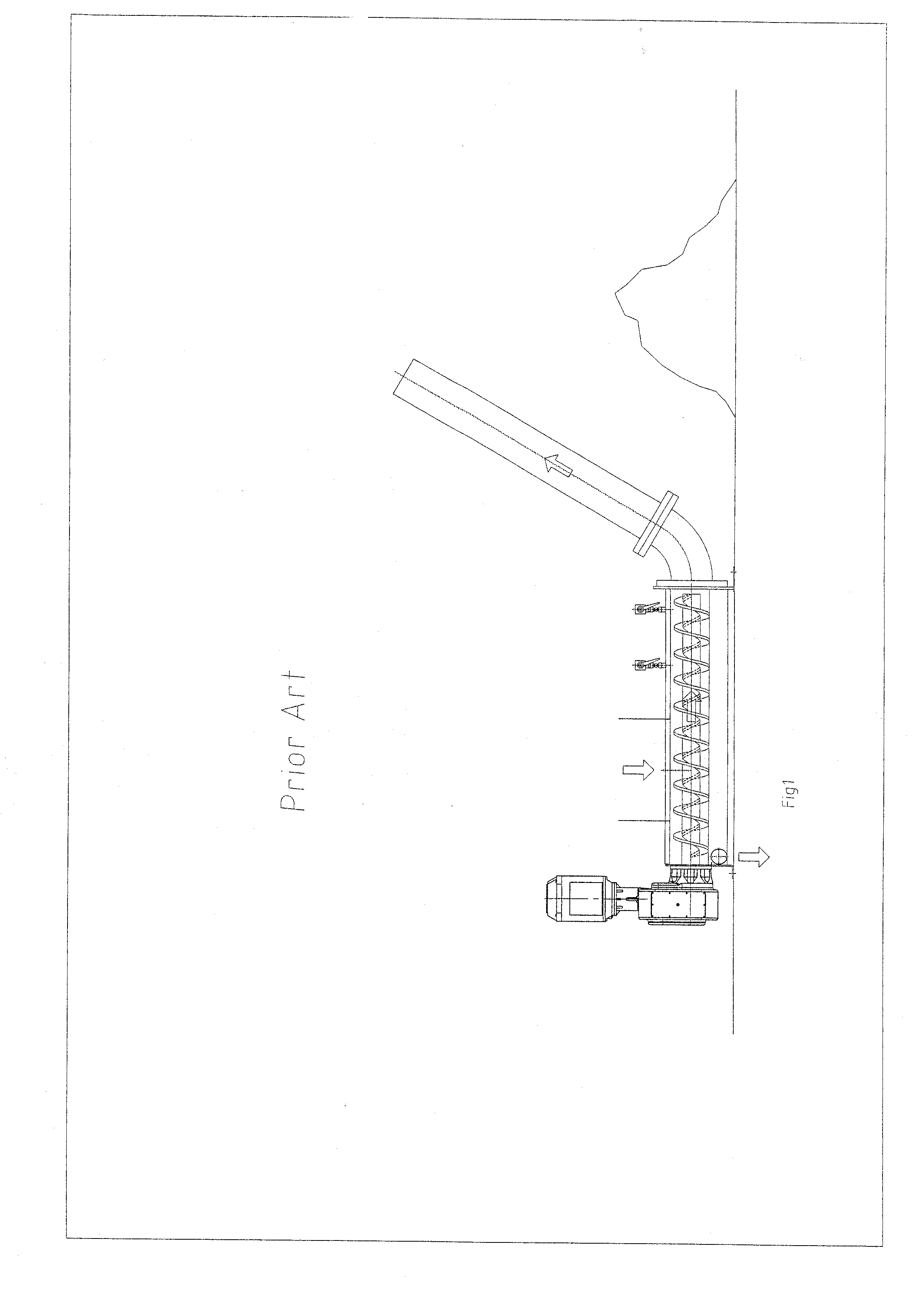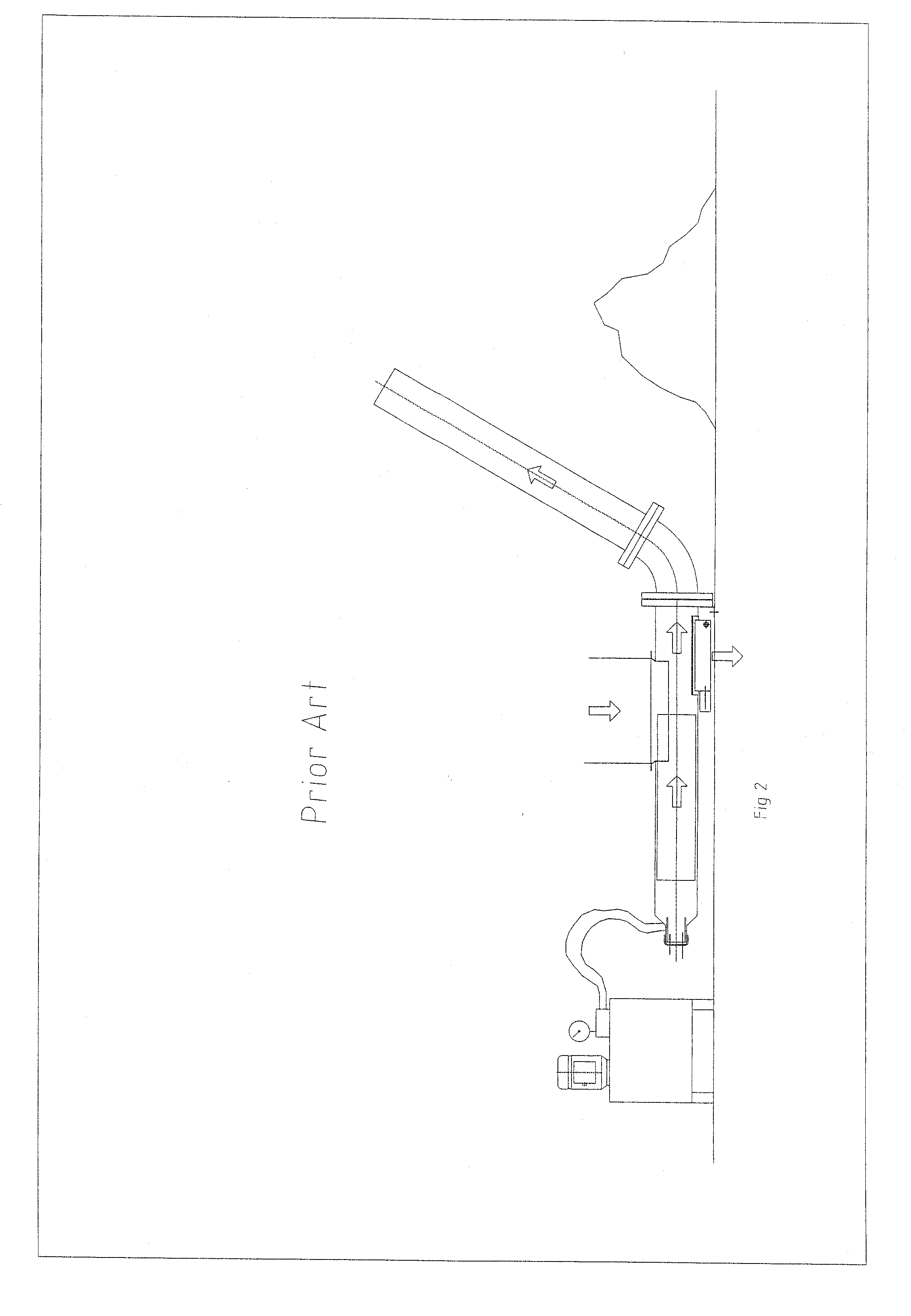Sludge treatment
a technology of sludge and apparatus, applied in the direction of separation process, filtration separation, manufacturing tools, etc., can solve the problems of high friction, no known solution has given a satisfactory solution to the problem, press/conveyor system, etc., to achieve cleaner sludge, improve control, and reduce handling, storage and disposal costs
- Summary
- Abstract
- Description
- Claims
- Application Information
AI Technical Summary
Benefits of technology
Problems solved by technology
Method used
Image
Examples
Embodiment Construction
[0038]FIGS. 1, 2 and 3 show apparatuses according to prior art. Accordingly, FIG. 1 shows a conventional screw press / screw wash press for sludge dewatering including a compaction device and followed by a tube conveyor for transporting dewatered sludge. FIG. 2 shows a conventional piston press for sludge dewatering including a compaction device and followed by a tube conveyor. FIG. 3 shows a modified conventional screw press / screw wash press for sludge dewatering including a compaction device and followed by a tube conveyor for transporting dewatered sludge having a conveying tube with widening diameter in the direction of transport in order to avoid blocking by dry sludge.
[0039] Embodiments of the present invention will now be explained in detail with reference to FIGS. 4 to 11.
[0040]FIG. 4 shows a general embodiment including a screw press 3, a compaction device 10 in the form of a tube bend connected to the screw press 3 downstream thereof and a tube conveyor 11 extending upward...
PUM
 Login to View More
Login to View More Abstract
Description
Claims
Application Information
 Login to View More
Login to View More - R&D
- Intellectual Property
- Life Sciences
- Materials
- Tech Scout
- Unparalleled Data Quality
- Higher Quality Content
- 60% Fewer Hallucinations
Browse by: Latest US Patents, China's latest patents, Technical Efficacy Thesaurus, Application Domain, Technology Topic, Popular Technical Reports.
© 2025 PatSnap. All rights reserved.Legal|Privacy policy|Modern Slavery Act Transparency Statement|Sitemap|About US| Contact US: help@patsnap.com



